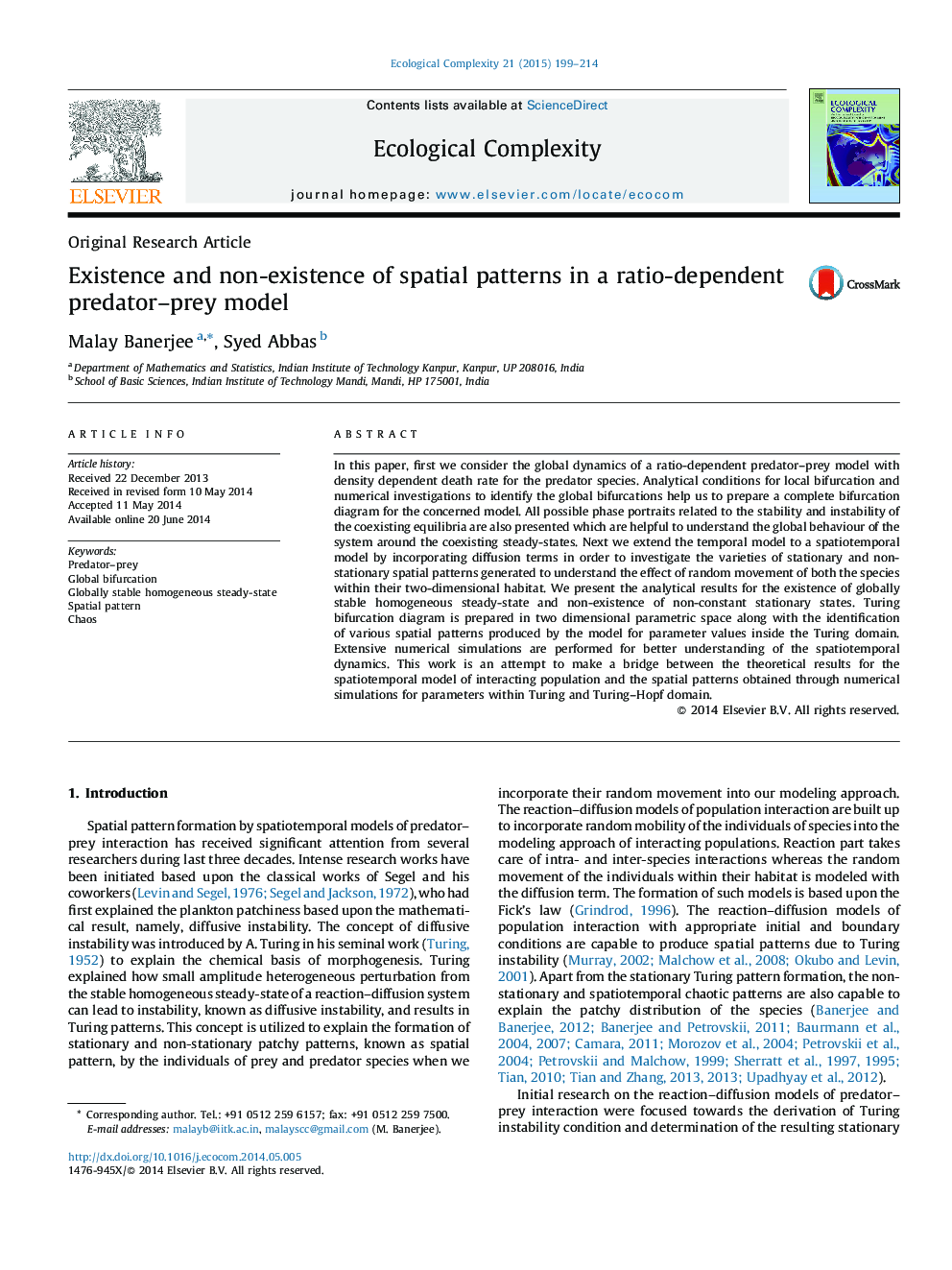| کد مقاله | کد نشریه | سال انتشار | مقاله انگلیسی | نسخه تمام متن |
|---|---|---|---|---|
| 4372418 | 1617093 | 2015 | 16 صفحه PDF | دانلود رایگان |
• Global dynamics of a ratio-dependent predator–prey model is analysed.
• Homogeneous steady-state is globally stable under certain parametric restrictions.
• Varieties of spatial patterns are reported for parameters in Turing domain.
• Spatiotemporal chaotic pattern is observed within Turing–Hopf domain.
• A complete Turing bifurcation diagram is provided with gallery of patterns.
In this paper, first we consider the global dynamics of a ratio-dependent predator–prey model with density dependent death rate for the predator species. Analytical conditions for local bifurcation and numerical investigations to identify the global bifurcations help us to prepare a complete bifurcation diagram for the concerned model. All possible phase portraits related to the stability and instability of the coexisting equilibria are also presented which are helpful to understand the global behaviour of the system around the coexisting steady-states. Next we extend the temporal model to a spatiotemporal model by incorporating diffusion terms in order to investigate the varieties of stationary and non-stationary spatial patterns generated to understand the effect of random movement of both the species within their two-dimensional habitat. We present the analytical results for the existence of globally stable homogeneous steady-state and non-existence of non-constant stationary states. Turing bifurcation diagram is prepared in two dimensional parametric space along with the identification of various spatial patterns produced by the model for parameter values inside the Turing domain. Extensive numerical simulations are performed for better understanding of the spatiotemporal dynamics. This work is an attempt to make a bridge between the theoretical results for the spatiotemporal model of interacting population and the spatial patterns obtained through numerical simulations for parameters within Turing and Turing–Hopf domain.
Journal: Ecological Complexity - Volume 21, March 2015, Pages 199–214
